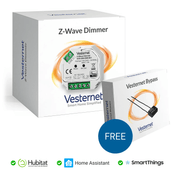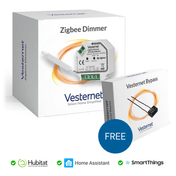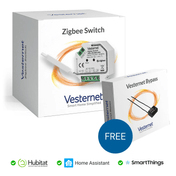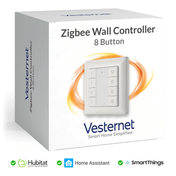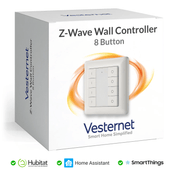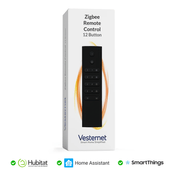Smart switches have revolutionised modern home automation, with adoption rates climbing as homeowners seek greater control over their lighting and electrical systems. However, the success of any smart home installation fundamentally depends on proper electrical installation that adheres to safety standards and building regulations. Installing smart switch components requires a thorough understanding of electrical principles, wiring requirements, and professional installation techniques.
A comprehensive approach to smart home electrician work ensures not only functionality but also long-term reliability and code compliance. Professional smart home wiring practices prevent common issues such as circuit overloads, connection failures, and safety hazards whilst maximising the performance of your smart home ecosystem. The integration of smart switches with existing electrical infrastructure demands careful planning and expert execution.
This complete guide provides the technical knowledge and professional insights needed for successful smart switch installations. From understanding fundamental electrical requirements to mastering complex wiring configurations, readers will gain the expertise necessary to approach smart home electrical projects with confidence and precision.
Understanding Smart Switch Electrical Fundamentals
Smart switches operate differently from traditional mechanical switches, requiring continuous power supply to maintain wireless connectivity and internal processing capabilities. Most smart switches require both live and neutral connections, unlike standard switches that only interrupt the live wire. This fundamental difference affects compatibility with existing wiring and influences installation requirements across various electrical systems.

Key electrical specifications for smart switches:
- Voltage requirements typically ranging from 100-240V AC for universal compatibility
- Load capacity specifications from 5W minimum to 300W+ maximum depending on switch type
- Neutral wire necessity for maintaining constant power to smart components
- Standby power consumption usually under 2W for energy efficiency
Understanding load capacity becomes crucial when installing smart switch units with LED lighting, where minimum load requirements may necessitate load resistors or bypass devices. Professional smart home wiring ensures proper load matching and prevents flickering or connectivity issues that commonly affect improperly installed smart lighting systems.
Electrical Safety Standards and Code Compliance
Electrical installation standards mandate specific safety protocols for smart switch installations, particularly regarding circuit protection and earthing requirements. UK electrical regulations require Part P compliance for most electrical work, making professional installation essential for many smart home projects. Understanding when DIY installation is permissible versus when qualified electrician involvement becomes legally required protects both safety and property value.
Circuit protection considerations extend beyond basic overcurrent protection to include surge protection and proper earthing for wireless components. GFCI protection requirements apply to smart switches in wet locations, whilst proper cable management and junction box sizing ensure code compliance and long-term reliability.

Essential safety protocols for smart switch installation:
- Circuit isolation and verification before beginning any electrical work
- Proper personal protective equipment including insulated tools and voltage testers
- Compliance with BS 7671 wiring regulations and Part P notification requirements
- Professional certification for complex installations or consumer unit modifications
Pre-Installation Planning and Assessment
Successful smart home wiring projects begin with comprehensive assessment of existing electrical infrastructure. Circuit identification, load calculations, and neutral wire availability determine compatibility with different smart switch types and inform installation strategy. Professional assessment prevents costly mistakes and ensures optimal system performance from the outset.
Critical assessment factors for smart switch compatibility:
- Existing wire gauge and condition assessment for current carrying capacity
- Junction box depth and width measurements for smart switch accommodation
- Circuit loading analysis to prevent overloading with additional smart devices
- Wireless signal coverage planning for reliable smart home communication
Installation blueprints should document circuit layouts, switch locations, and hub placement to ensure comprehensive coverage and optimal performance. This planning phase identifies potential challenges such as steel construction interference or electrical noise sources that could affect wireless communication.
Essential Tools and Materials for Professional Installation
Professional installing smart switch work requires specialised tools beyond basic electrical equipment. Digital multimeters, non-contact voltage testers, and wire strippers designed for smart home applications ensure precise installation and reliable connections. Quality connectors and proper cable management materials prevent long-term failure and maintain code compliance.
Testing equipment becomes particularly crucial for smart switch installations, where both electrical functionality and wireless communication must be verified. Professional-grade tools enable comprehensive testing and troubleshooting throughout the installation process.

Professional tool requirements for smart switch installation:
- Digital multimeter with continuity and voltage testing capabilities
- Non-contact voltage detector for safe circuit verification
- Wire strippers and electrical pliers designed for various cable types
- Torque screwdrivers for proper terminal connection tightening
- Cable insertion tools for pushing wires through wall cavities
Step-by-Step Installation Process
Professional smart switch installation follows systematic procedures that prioritise safety whilst ensuring reliable electrical connections. Circuit isolation must be verified at multiple points, including the consumer unit, local isolation switch, and final verification at the installation point. Proper wire preparation and connection techniques prevent loose connections that could cause arcing or system failure.

Critical installation sequence for smart switches:
- Circuit isolation and verification using appropriate testing equipment
- Existing switch removal and wire identification with proper labelling
- Junction box preparation including capacity verification and mounting assessment
- Wire preparation with proper stripping lengths and conductor preparation
- Smart switch mounting and secure electrical connections following manufacturer specifications
Initial testing procedures verify both electrical safety and basic functionality before energising the circuit. This systematic approach prevents damage to expensive smart components and ensures safe commissioning of the installation.
Advanced Wiring Configurations and Scenarios
Complex installations involving three-way and four-way switching arrangements require careful analysis of existing wiring configurations and may necessitate additional neutral conductors. Multi-gang installations present space constraints that affect heat dissipation and require careful component selection to prevent thermal issues.
DIN rail mounting systems offer centralized control for extensive smart home installations, particularly in commercial or multi-unit residential applications. These configurations require professional smart home electrician expertise to ensure proper current distribution and system coordination.
Advanced configuration considerations:
- Three-way switch conversion requiring traveller wire identification and neutral provision
- Multi-gang box thermal management with appropriate spacing and ventilation
- DIN rail system design with proper current distribution and circuit protection
- Integration with existing building management systems and protocols
Testing, Commissioning and Network Integration
Comprehensive testing procedures verify both electrical safety and smart home functionality before final commissioning. Electrical testing includes insulation resistance, continuity verification, and proper earthing connections, whilst network testing confirms reliable wireless communication and proper device pairing.
Essential commissioning tests for smart switch installations:
- Insulation resistance testing to verify cable integrity and safety
- Load testing under realistic operating conditions
- Network connectivity verification and signal strength measurement
- Integration testing with smart home hubs and control systems
Troubleshooting common connectivity issues often involves addressing electrical interference sources or optimising mesh network topology. Professional installation includes documentation of network configuration and device settings for future maintenance and expansion.
Maintenance, Troubleshooting and Long-Term Considerations
Ongoing maintenance requirements for smart switches include regular firmware updates and periodic electrical connection inspection. Professional smart home wiring installations should include maintenance schedules that address both electrical safety and system performance optimization over time.
Long-term planning considerations include provision for future smart home expansion and compatibility with emerging wireless protocols. Proper installation techniques and quality components ensure system reliability and reduce maintenance requirements whilst supporting future upgrades.
Long-term maintenance requirements:
- Annual electrical connection inspection and tightening as needed
- Regular firmware updates and security patch applications
- Network performance monitoring and optimisation adjustments
- Documentation updates reflecting system changes and expansions
Conclusion
Professional smart switch installation requires comprehensive understanding of electrical installation standards, proper switch wiring requirements, and systematic approach to ensure safe, reliable operation. The technical requirements outlined in this guide emphasise the importance of professional expertise for complex installations whilst highlighting opportunities for qualified DIY work where appropriate. Code compliance and safety considerations must remain paramount throughout any smart home electrical project.
Starting your smart home journey with proper planning and assessment creates the foundation for successful long-term automation. Whether pursuing DIY installation for simple configurations or engaging professional smart home electrician services for complex systems, systematic approach and quality components ensure optimal results. Professional installation becomes essential for advanced configurations, multi-circuit installations, or projects requiring consumer unit modifications.
Ready to explore professional-grade smart switches and installation components for your smart home? Vesternet offers an extensive range of smart switches, wall controllers, wall controller switches, and smart plug switches designed for reliable professional installation. Our expert team provides technical guidance to help you select the right components and installation approach for your specific electrical requirements and smart home goals.










